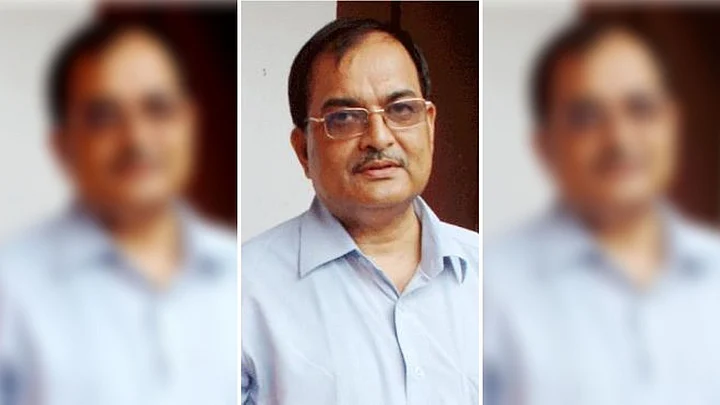The final hearing in the high-profile Ram Janmabhoomi-Babri Masjid Land Dispute Case concluded on Wednesday, 16 October, with a dash of drama as senior advocate Rajeev Dhavan, representing the Muslim parties, tore up copies of a pictorial map and pages from a book submitted at the last minute by one of the Hindu parties.
The book, titled Ayodhya Revisited, is an 800-page 2016 publication authored by IPS officer turned religious worker Kishore Kunal.
It claims that the first Mughal Emperor Babar had no role either in the demolition of a temple in Ayodhya or in the construction of the Babri Mosque. It also claims that a temple was indeed present at the disputed site.
Who Is Kishore Kunal?
Kishore Kunal was born on 10 August 1950. He did his schooling from Baruraj village in Muzaffarpur district. 20 years later, he graduated from Patna University in History and in Sanskrit.
He became an Indian Police Service (IPS) officer in 1972 from Gujarat cadre and was posted as superintendent of police, Anand. From there, he rose to become the deputy commissioner of police, Ahmedabad, in 1978.
Kunal served as Officer on Special Duty in Home Ministry from 1990 to 1994 where he first became involved with the Ayodhya dispute. In 1983 he was promoted to Senior Superintendent of Police, Patna.
He was already involved in religious work during his days as an IPS officer. After retiring from the force in 2000, he took the position of Vice Chancellor of KSD Sanskrit University, Darbhanga, where he stayed till 2004.
He later became the administrator of Bihar State Board of Religious Trusts (BSBRT) and initiated reforms in prevalent casteist religious practices.
What Claims Does the Book Make?
In Ayodhya Revisited, Kunal asserts that the temple in Ayodhya was demolished by Fidai Khan, the governor of Ayodhya, in 1660, following orders of Mughal Emperor Aurangzeb. He further argues a temple did exist at the disputed site, citing accounts by foreign travelogues.
“For the first time I have established that there existed a temple at the disputed site on the basis of original evidence, including slokas on Ayodhya mahatmya of the Rudrayamala,” he said in an interview with Rediff.
He says that the inscriptions inside the mosque, which state that it was built by Babur, were fake and that were fixed 280 years after the mosque’s supposed construction in 1528.
“Babur had no role either in the demolition of any temple at Ayodhya or in the construction of a mosque at the site. I have concluded it on the basis of incontrovertible information,”Kishore Kunal in an interview with Rediff
The pictorial map that was shredded in court on Wednesday was prepared by Kishore Kunal, who stands by his work.
“As a lawyer Dhavan knows if the map is handed over to the court, he'd lose the case,” he told The Times of India, adding that his book is conclusive proof of Ram’s exact birthplace.
It should be noted, however, that Dhavan was not objecting to the contents of the map and other extracts from Kishore’s book, but the fact that the All India Hindu Mahasabha had tried to submit it on the last day of the hearings, long after the time to place documents on record had passed.
In the post-lunch session, Dhavan informed CJI Ranjan Gogoi his tearing of the pages had gone viral, and asked the CJI to confirm that he had only been following the judge’s instructions to him, following his objections over how the map could be introduced at this stage.
(With inputs from PTI, Rediff, The Times of India and The Telegraph)
(At The Quint, we question everything. Play an active role in shaping our journalism by becoming a member today.)
